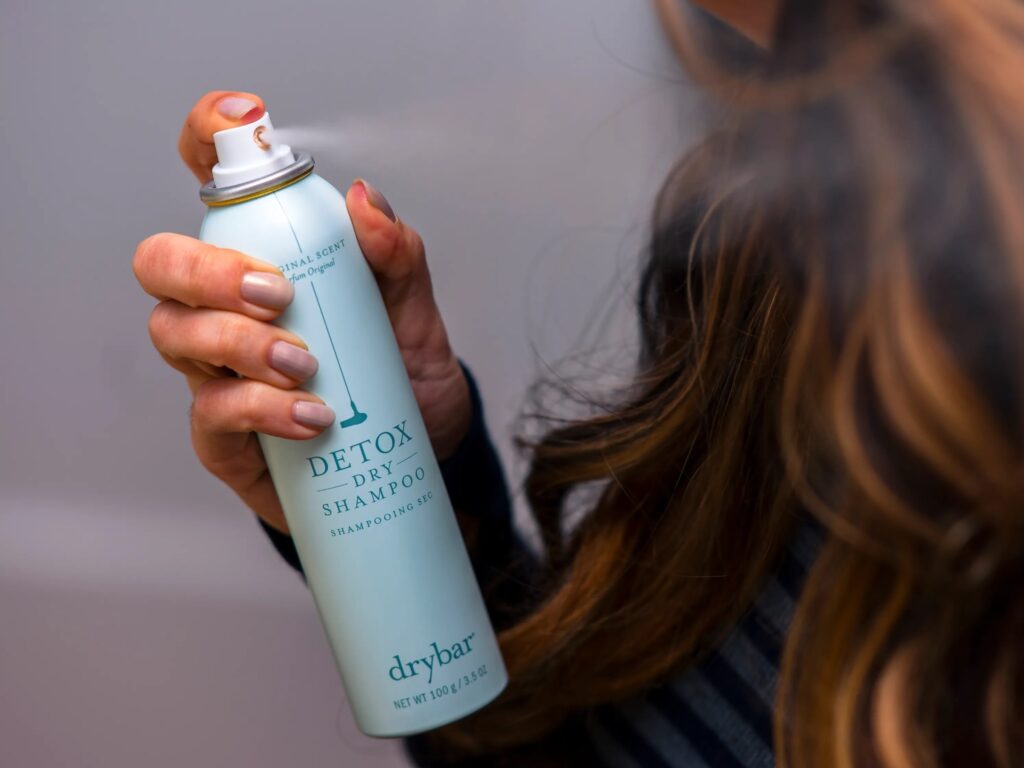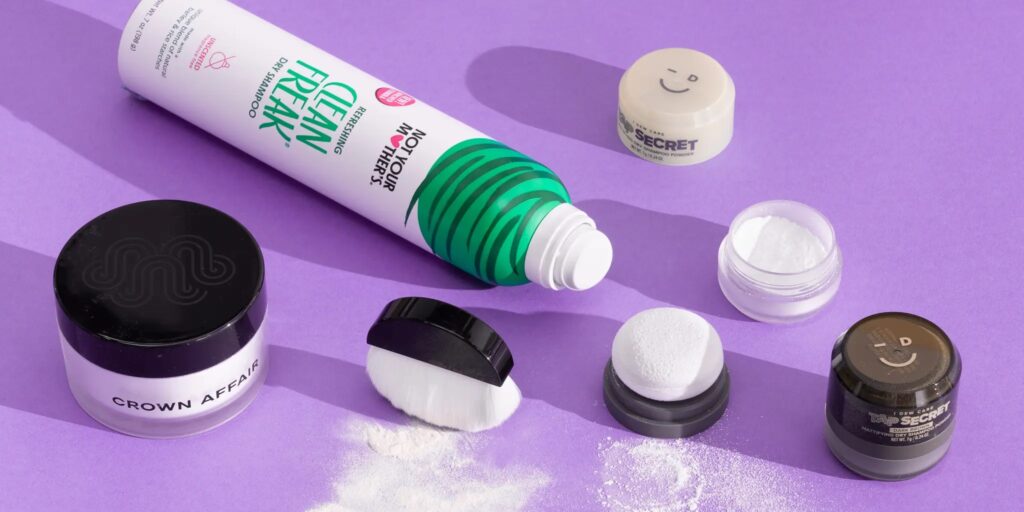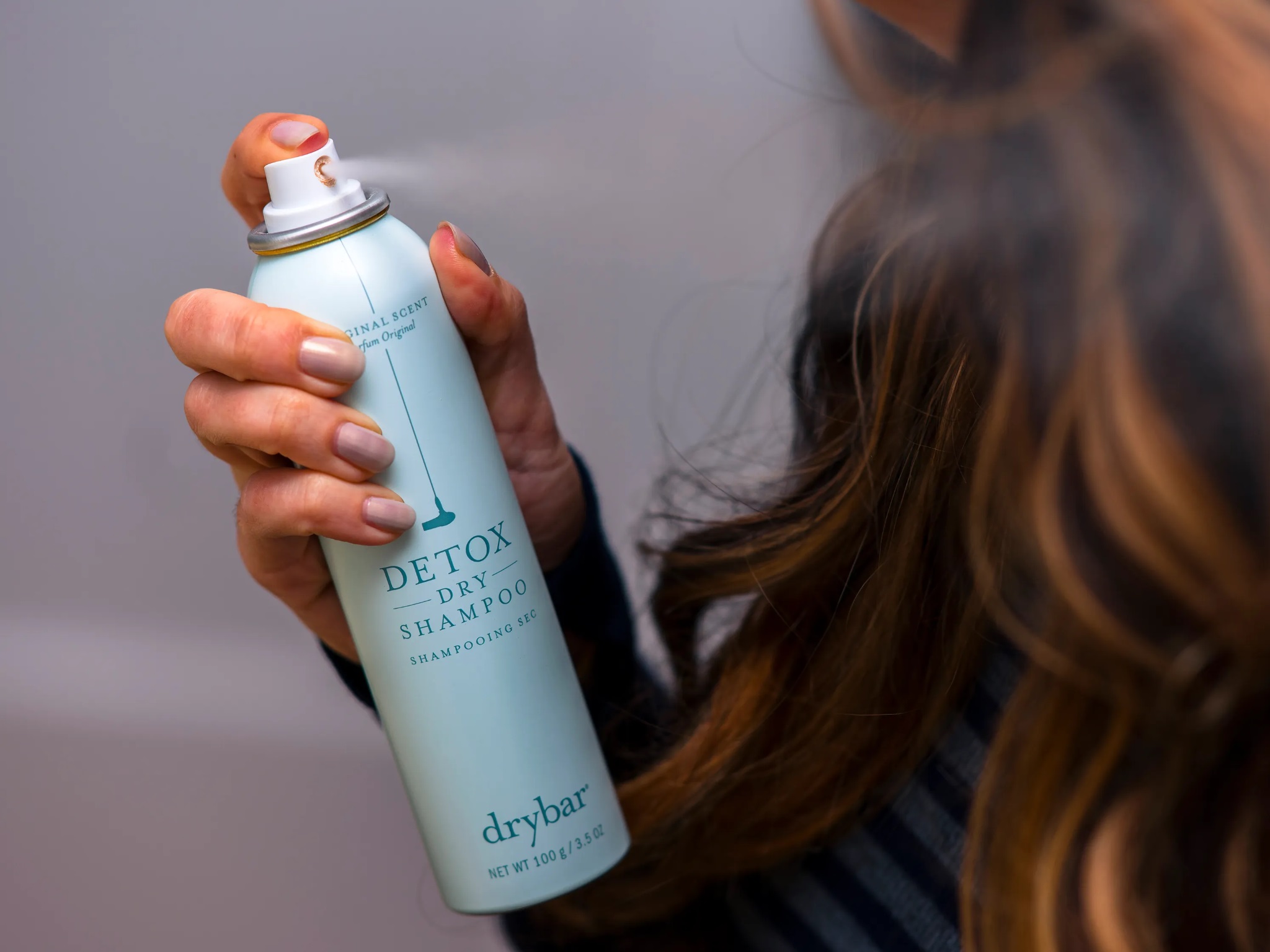
Dry shampoo is a product that absorbs the dirt, oil, and grease off your scalp without washing it. Many people use it to freshen their hair after working out, on a humid commute, or to extend the life of a blowout, among other uses. It can also be beneficial for individuals with disabilities who struggle to take showers independently.
What Does Dry Shampoo Do?
Your scalp is home to oil-producing glands called follicles. These glands release sebum, a natural oil that keeps both your scalp and hair soft and protected. As the day goes on, sebum, sweat, and tiny bits of dirt start to build up, especially if you’re active or out and about. That’s when your hair starts looking greasy, not dirty, just oily.
Now, washing your hair daily might seem like the obvious fix, but here’s the catch: constant washing and heat styling can actually dry out your scalp and mess with its natural balance. Dry shampoo might be the right answer.
So, how does dry shampoo work? It’s usually made with alcohol or starch-based ingredients that act like mini sponges. They absorb the excess oils sitting on your scalp and in your roots. The result? Your hair looks fresher, less oily, and more put-together.
In short, what does dry shampoo do? It gives your hair a refresh without the full wash routine. It’s a practical go-to for in-between days.
When Should You Use It?
Knowing when to use dry shampoo lets you handle your hair in the way you want it, without extra washing days. Traditional shampooing with water and lather is still essential, but you don’t need to do it daily unless your scalp gets oily fast.
So, when should you use dry shampoo? Use it:
- On non-wash days, to reduce visible oil at the roots;
- After a workout, if your scalp feels sweaty;
- When you’re short on time and need a quick refresh;
- Enhance texture and volume prior to styling.
Dry shampoo helps keep the balance in your routine.
Guide To Using Dry Shampoo
So, how to use dry shampoo? The way you apply dry shampoo isn’t one-size-fits-all. It depends on several personal factors, including your hair kind, length, texture, and the level of oiliness on your scalp. That said, there’s a general method that works for most people, and you can tweak it as needed.
First, make sure your hair is completely dry. Take out any clips, pins, or ties so you handle all parts of your head. Then, you can do this:
- Position the dry shampoo container about 6 inches (ca. 15 cm) from your head.
- Spray directly into your roots, focusing on areas where oil usually builds up, like your crown, the nape of your neck, above the ears, and the back of your head.
- Use your fingertips to massage the product into your scalp gently. It distributes the powder and absorbs oil more evenly.
- Optional: Use a cool blow-dry for a quick lift and extra volume.
This technique allows the dry shampoo to do what it’s meant to: refresh your roots. Best part: it won’t even leave visible residue or buildup.

Comparing Dry Shampoo vs. Washing Hair
Let’s compare dry shampoo vs. washing hair. Dry shampoo has its place in your care, but it’s not designed to replace washing with water and regular shampoo. Think of it as a temporary solution: something to keep your hair nice and shiny between actual washes, not a cleaning method in itself.
Here’s the key difference: dry shampoo absorbs oil at the roots, but it doesn’t clean your scalp. Dirt, sweat, product residue, and natural buildup stay put until you rinse them out. There’s also the matter of your hair’s health. Many traditional shampoos include ingredients that moisten and strengthen the strands. You also don’t get all the benefits of water-based cleansing.
So what’s the best approach? Two to three times a week, depending on the hair you have, you should wash it with shampoo and water, according to experts. In the end, dry shampoo is helpful, but it should support the routine. It must not replace it.
